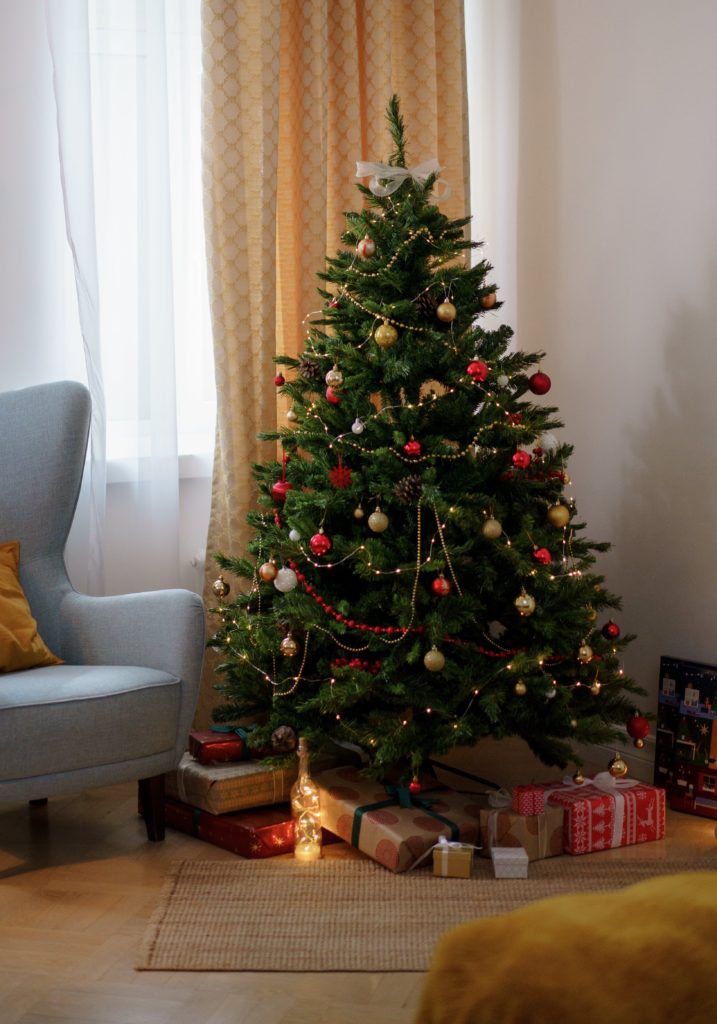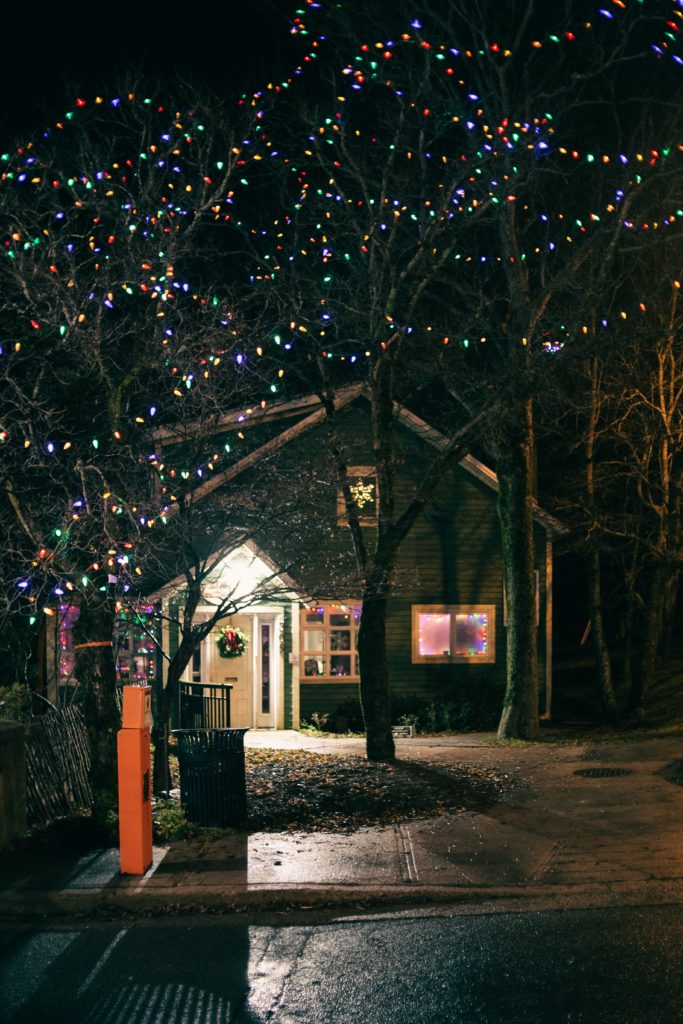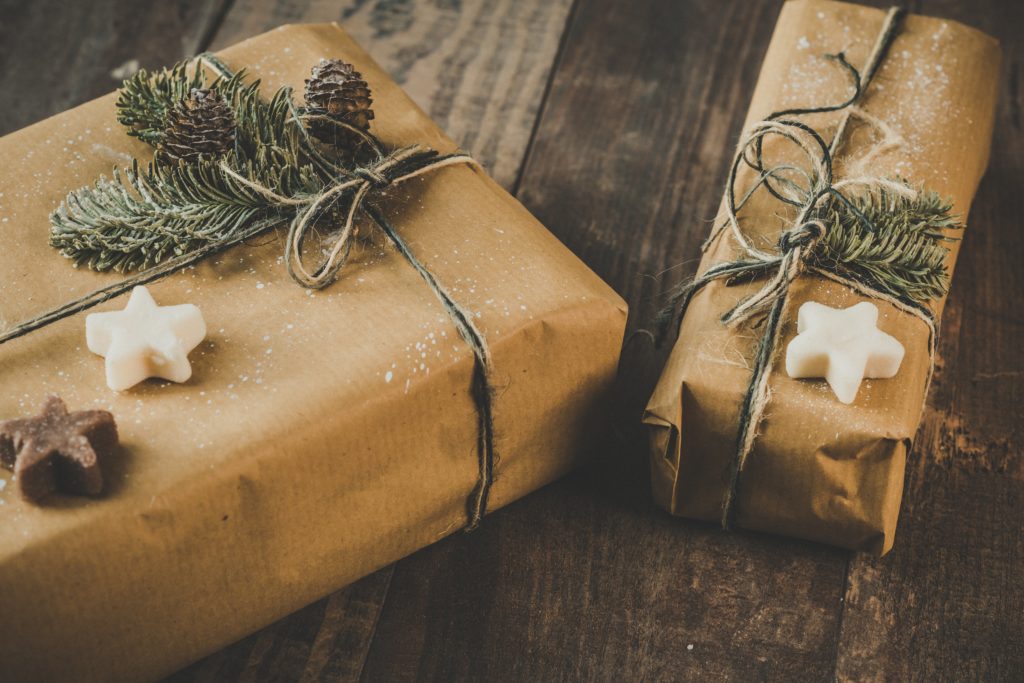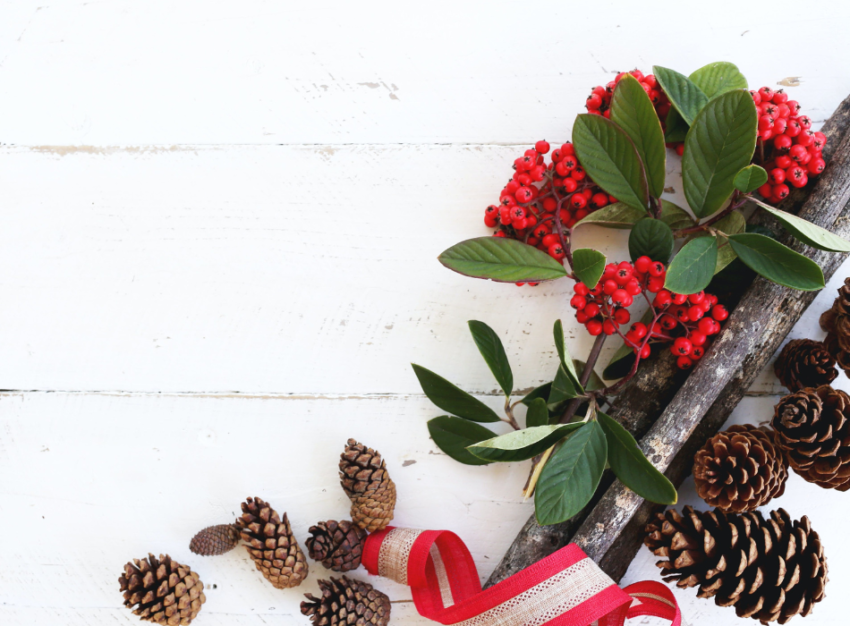I love Christmas—it’s my favourite holiday. I love cheerful Christmas lights, carols, the abundance of baked goods and traditions like decorating the tree. I also love the magical feeling that the holiday lends to the whole month of December.
In my family, Christmas is a low-key affair, just celebrated with immediate family. We’ll open presents in the morning, make a fancy dinner, and maybe go for a walk or play board games. Christmas is one of the only days of the year when I don’t try to do anything productive (that and my birthday). The only useful tasks that I do are those needed to keep the day moving forward—things like cooking and putting away dishes and presents. In my family, that also includes dealing with the wrapping paper.
For as long as I can remember, my family has reused wrapping paper. Later in the day, after everyone has opened their presents, I (and sometimes my mom) will sort through the pile of wrapping paper and decide which pieces are large enough and in good enough shape that they’re worth keeping.
What I don’t love about Christmas is the focus on consumerism—on spending money and buying things just for the sake of buying things, regardless of whether the person actually needs the gift. (Just think of the so-called “Christmas creep,” in which the marketing of Christmas-themed items starts even before Halloween.)
Christmas can be wasteful in other ways as well, including the energy used for Christmas lights and the overeating at Christmas dinners. By simplifying your Christmas celebration, you can focus on what really matters: family and fun.
Tips for being sustainable at Christmas
My tips for being sustainable at Christmas are no different than for the rest of the year: buy less, shop consciously, and dispose of items responsibly (think reusing and recycling).
Consider your Christmas tree

Did you know that approximately 25 to 30 million real Christmas trees are sold in the U.S. every year? There’s a bit of a debate in sustainability circles about whether it’s better to put up a real or artificial tree (if you’re going to have a tree at all). Artificial trees are made of plastic and will likely end up in a landfill eventually, though they can be used multiple times. If you go the artificial route, buy one second-hand if possible and make sure to use your tree as many times as possible.
While buying a real Christmas tree involves cutting down trees, Christmas tree farms replant their trees regularly. If you opt for a live tree, look for one that’s locally grown and certified by the Forest Stewardship Council (FSC). If you live close to a source of Christmas trees, consider bringing your tree home using a sled or wagon instead of a car!
When it comes time for disposal, many municipalities offer a pickup service for real Christmas trees. Here in Toronto, Christmas trees form part of yard waste, which the City turns into compost. You could also consider buying a potted tree, which you can reuse for several years.
Make your own holiday decorations
My family’s tree is normally covered with a mishmash of ornaments, including paper chains, old candy canes, and crafts my sister and I made in elementary school. It doesn’t look the most elegant, but it’s homey.
One of the best things you can do is make your own ornaments and decorations from items you already have or natural materials, like toilet paper rolls, fabric, cinnamon sticks or pine cones. If you need inspiration, check out this list from Good Housekeeping.
If you buy ornaments, look for ones that are durable, made from sustainable materials or even second-hand, to save precious resources.
Lower the impact of your Christmas lights

Christmas lights are a big energy suck and lead to increased brightness in North American cities over the holidays compared to other times of year. BC Hydro found that overall holiday electricity usage in B.C. increased by about 15% between 2012 and 2018, even though British Columbians had largely switched to using energy-efficient LED Christmas lights. That increase was mainly due to elaborate holiday displays full of inflatables.
I can’t quite recommend eliminating Christmas lights altogether. On a dark and dreary winter evening, those colourful lights bring a lot of joy. However, there are some steps you can take to reduce the impact of your lights, the first of which is using fewer lights—and reconsidering that inflatable Santa.
Consider as well the type of lights. The ideal is LED and solar-powered. As I alluded to earlier, LED lights make for significant savings. According to that same report from BC Hydro, LED holiday lights use up to 90% less energy than traditional incandescent holiday lights and can last up to 10 times longer.
My final suggestion is to put your lights on a timer and only run them when they’ll have the most impact. You probably don’t need Christmas lights on in the middle of the night, nor in the daytime when the lights won’t stand out clearly anyways.
Green your gifting
Christmas shopping is serious business. A 2022 Gallup poll found that Americans planned to spend an average of $932 on holiday gifts (crazy, isn’t it?). Before you pull out your credit card, consider whether you can make do with what you already own by making a present or regifting an item that you no longer need (books are great for that).
If you’re buying presents, giving consumable gifts like food or experiences like a ticket to their favourite band’s show is a great way to cut down on waste. And if you’re buying physical items, look for locally made products made of (relatively) sustainable materials like recycled paper. If you want to sneak in some sustainability education, try giving a reusable coffee cup or reusable produce bags!
No one likes getting a gift that they don’t want and having to pretend to like it. It may ruin the surprise, but consider just asking the person what they need or want. Alternatively, give a gift card or cold hard cash so that the person can choose something they actually want. Another impactful option is to make a donation in the person’s name—to a cause or organization they care about, of course.
Wrap presents sustainably

Sustainability doesn’t stop at what you buy—it also includes how you package those presents. In 2017, Zero Waste Canada estimated that Canadians throw out 540,000 tonnes of wrapping paper and gift bags each year. In many cases, wrapping paper can’t be recycled due to its glitter and foil elements.
There are a few characteristics that make for better wrapping paper from a sustainability standpoint: made from recycled materials, FSC-certified, durable, and free of glitter and foil. Check the recycling rules where you live (here in Toronto, all wrapping paper is supposed to go in the garbage, apart from tissue paper, which can be recycled).
Alternatives to traditional wrapping paper include newspaper, brown paper, gift bags, old shoe boxes and furoshiki (Japanese wrapping cloths). You can also be like my family and reuse wrapping paper for as long as possible!
Clean up your Christmas cards
Cards are another Christmas classic. Residents of the U.K., for example, send an estimated 1.05 billion Christmas cards a year, but around one billion of those cards don’t get recycled.
Look for cards that are made of recycled material and are free of glitter and electronics so that they can be recycled easily. At the end of the season, remember to recycle the cards you’ve received or, better yet, turn them into ornaments or tags for presents.
Sustainable alternatives to traditional Christmas cards include seed cards (which can be planted in soil) and e-cards (which eliminate physical waste altogether). Alternatively, try making your own cards using paper and other odds and ends you have lying around! My mother will paint a large piece of paper and cut it into rectangles, then glue those on blank cards.
Don’t forget the food
Christmas often involves a lot of eating. Do what you can to reduce food waste by planning ahead and storing leftovers properly.
Consider as well skipping the turkey to reduce the greenhouse gas emissions from your meal. There are lots of festive vegetarian options out there, like a Tofurky roast, a nut roast, or shepherd’s pie made with mushrooms or lentils. My family normally abandons tradition altogether by making homemade tortillas or vegetable paella.
Remember to use reusable napkins, plates and cutlery at your Christmas dinner to eliminate unnecessary waste.
How to be sustainable at Christmas
From presents to Christmas lights and from holiday feasts to Christmas trees, Christmas is a holiday focused on material goods and consumption. You can make your celebration more sustainable by focusing on the experience instead of possessions—buy fewer things, buy thoughtfully, extend items’ life and dispose of them responsibly.
I want to know: How do you make your Christmas celebration sustainable?
Categories and tags:
Share this post:


Sometimes I wrap gifts in pretty tea towels. The recipient ends up with two gifts then.
That’s a lovely idea!
Nicely done, Eleanor. When my family lived in England in the 1960s, people would buy potted Christmas trees, which would later be transplanted into the garden.
Thank you! And that’s great. There are lots of lessons we can learn from old ways of doing things.